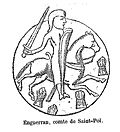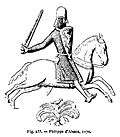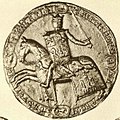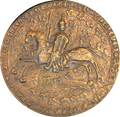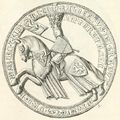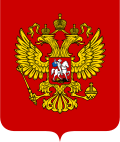Early examples (before 1170)
Early examples of equestrian seals are known from the second half of the 11th century. The oldest example that may be addressed as an "equestrian seal" is that of William I of England (c. 1067). [1] Among the oldest extant examples in Germany is the seal of Henry of Laach (c. 1090). The horseman is characterized by the kite shield and a conical helmet, often bearing a banner. This type is continued into the mid-12th century, and late examples of kite shields are found into the 1160s.
- William I of England (c. 1067)
- Ralph I, Count of Vermandois (1116)
- Thibaut de Blois (1138)
- Fulk, King of Jerusalem (r. 1131–1143)
- Gilbert de Clare (before 1148)
- Gilbert de Clare, 1st Earl of Pembroke (d. 1148)
- Enguerrand (Ingelram), count of Saint-Pol (before 1150)
- Ramon Berenguer IV of Barcelona (1150)
- Ottokar III of Styria (1157)
- Ottokar III of Styria (1160)
- David, Earl of Huntingdon (1160)
- Robert III de Vitré (d. 1161)
- Galéran IV de Meulan (1165)






